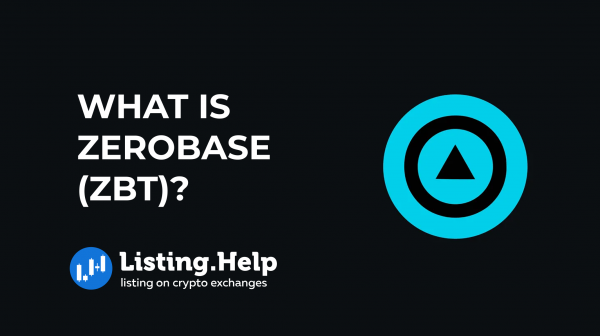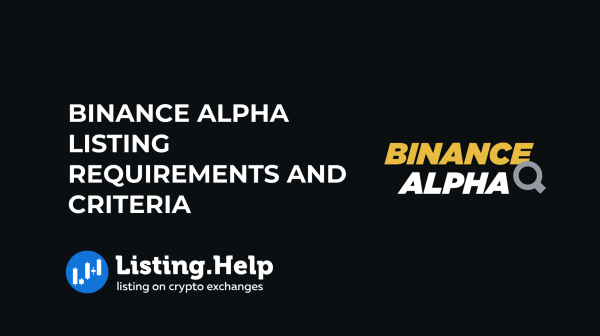Bitcoin Halving: When It Happens and Why It Matters?
 February 20, 2024
February 20, 2024 Updated: January 27 2025, 07:19
Updated: January 27 2025, 07:19
LEAVE A REQUEST
Launching your own token project? Our experts are ready to help with listing on exchanges, market making, marketing and other solutions
SUBMIT APPLICATIONIn the realm of cryptocurrency, the Bitcoin Halving event stands out as a pivotal and highly anticipated event. Happening approximately every four years, this event has profound effects on the cryptocurrency market and sparks lively discussions among blockchain enthusiasts. Understanding the significance of the Bitcoin Halving is essential to appreciating its impact and the reason it attracts such keen interest and widespread speculation.
What Is Bitcoin Halving?
The Bitcoin Halving, also referred to as the “Halvening,” is a programmed event within the Bitcoin protocol that takes place approximately every four years, or after every 210,000 blocks have been mined. This event halves the rewards that miners receive for adding new transactions to the blockchain, aiming to control the creation of new coins and ensure the currency’s scarcity, thus preserving Bitcoin’s limited supply.
As described in the 2008 whitepaper by the mysterious Satoshi Nakamoto, Bitcoin was engineered to have a cap of 21 million units to avert inflation, akin to the limited availability of natural resources such as gold. This deliberate limitation on the rate of new coin creation seeks to foster a currency that maintains or increases in value over time.
Therefore, the Halving significantly influences the introduction rate of new coins into the economy, gradually reducing the rewards for mining activities. Initially set at 50 units per block, these rewards have been systematically halved over time. The first reduction occurred in 2012 to 25, followed by a decrease to 12.5 in 2016, and then to 6.25 in 2020. The forthcoming Halving will further cut this reward to 3.125 units, expected to occur in April 2024 when the network hits the 840,000-block mark.
What Happens to Bitcoin After Halving?
The repercussions of a Bitcoin halving on your holdings are indirect; the amount of Bitcoin in your wallet stays the same post-event. What changes, though, are certain dynamics in the wider market and ecosystem that might affect its price. This is the reason the event draws keen interest from a spectrum of market participants. Below are key reasons why Halving is noteworthy and its anticipated impacts:
1. Influence on Supply and Demand
By decelerating the creation of new units, the halving tightens supply, altering the supply-demand balance and potentially affecting the cryptocurrency’s market value. Economic principles suggest that diminished supply, against steady or increasing demand, usually leads to price appreciation. The prospect of heightened scarcity before a halving can drive a surge in interest and speculation.
2. Market Volatility
Recognized for ushering in a phase of greater market volatility, the halving event heightens speculative and investor activity, all aiming to predict its effect on valuation. This anticipation acts as a trigger for fluctuating prices and heightened trading action as the community responds to anticipated market shifts.
3. Mining Profitability
Halving the rewards for adding new blocks directly impacts mining profitability by reducing miners’ earnings. This can present challenges for those with significant operational expenses or outdated technology, potentially reshaping the competitive landscape. The aftermath may see a consolidation among miners, with only the most efficient and financially robust surviving, crucial for the network’s health and efficiency.
4. Encouraging Technological Growth and Collaboration
Every Halving event triggers crucial conversations and debates within the blockchain circle, spurring developers and participants to seek novel solutions to the new challenges posed by the evolving ecosystem. This drive towards innovation can lead to the development of enhanced tools and initiatives aimed at boosting scalability, efficiency, and security, contributing to the network’s resilience and continuous evolution.
5. Long-term Investment Landscape
For investors looking at the bigger picture, the Halving highlights Bitcoin’s deflationary aspect, enhancing its appeal as a durable investment. The built-in scarcity mechanism aligns it with traditionally valuable assets like gold, positioning it as a countermeasure against inflation and market instability. This feature strengthens Bitcoin’s image as “digital gold,” attractive for diversifying portfolios with potential for appreciable returns over time.
What If Bitcoin Miners Exit En Masse?
If a large number of Bitcoin miners were to exit the mining process suddenly, it would have a pronounced effect on the network’s hash rate and other critical facets. The hash rate, which measures the total computational effort being applied to mine and process transactions, would see a significant decrease. This reduction in computational power would lead to increased block confirmation times and a dip in network security.
Should such a mass exit occur, the Bitcoin network might temporarily face a slowdown, prompting some users to switch to faster blockchains. This could, in turn, make the network more vulnerable to attacks by malicious entities.
Despite these potential challenges, past occurrences, such as halving events, have not led to a sustained miner exodus. For example, following the 2012 halving, there was a brief period where the hash rate declined, from December 2012 through mid-February 2013, only for it to then rebound alongside mining profitability. This recovery suggests that, despite initial disruptions, halving events can ultimately benefit both miners and the network’s health.
The aftermath of the second halving mirrored this pattern, albeit with a delayed recovery in mining profitability, which took almost a year to bounce back. Should this trend persist in future halvings, miners might face a more extended period of reduced profitability.

When is the next Bitcoin halving event?
With nearly 89% of the maximum 21 million Bitcoins already mined and in circulation, amounting to over 19 million BTC, and around 900 new Bitcoins being introduced daily, the supply of new Bitcoins is steadily approaching its limit. This gradual reduction will continue until the cap is reached, with the last Bitcoin expected to be mined around the year 2140.
The specific timing of the next halving event, which will take place at the mining of the 840,000th block since the last halving, is not precisely known. Given that new blocks are added to the blockchain roughly every 10 minutes, projections suggest that the upcoming halving is slated for around April 2024. This event will decrease the reward for mining a block to 3.125 BTC.
As the rewards for mining decrease, the competitive landscape of Bitcoin mining will intensify, compelling miners to adapt to the evolving challenges of securing smaller rewards in an increasingly competitive field.
Conclusion
The Bitcoin Halving transcends its role as a technical recalibration; it stands as a cornerstone of the cryptocurrency landscape, pivotal in molding the narrative and direction of Bitcoin’s journey. With every Halving, the conversation intensifies regarding Bitcoin’s inherent worth, its position within the wider financial ecosystem, and its capacity to revolutionize digital finance.

For further insights into the latest trends and developments in blockchain technology, we invite you to explore our blog at Listing.Help.







 December 8, 2025
December 8, 2025 








